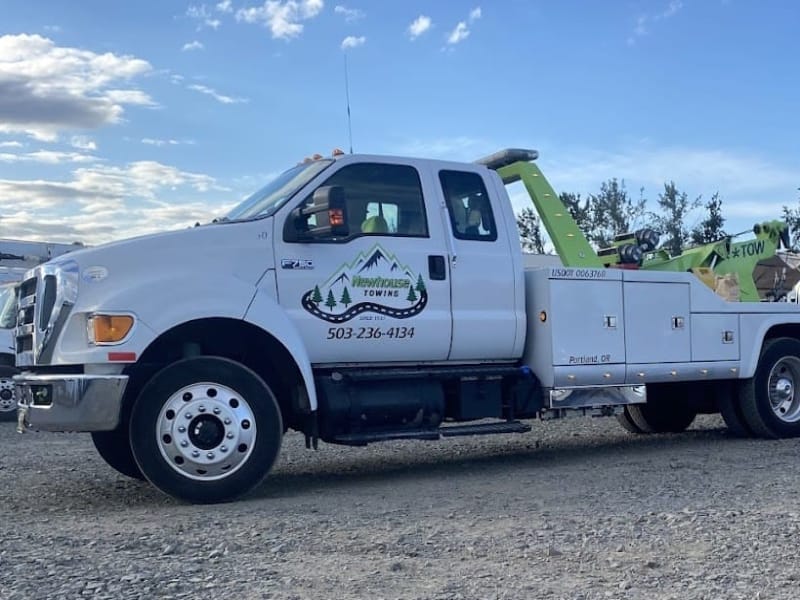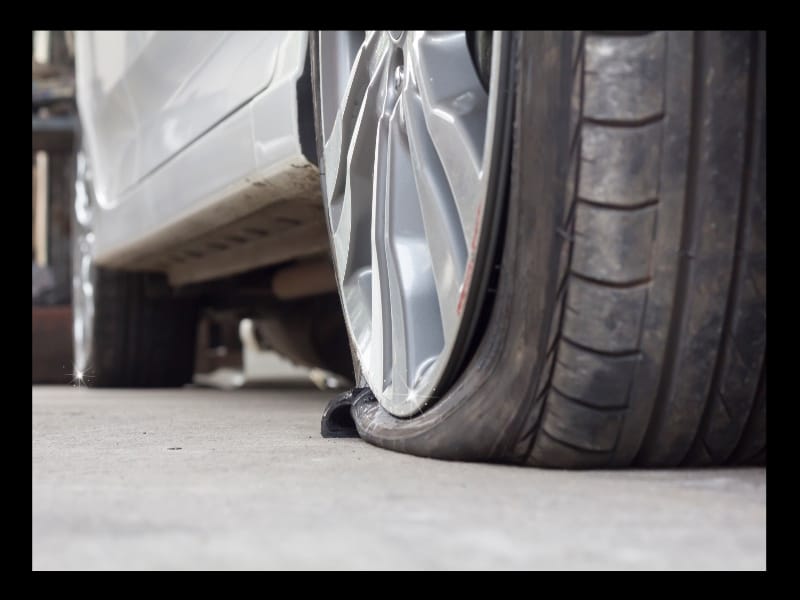What Happens When You Rely on That Donut Tire
You’re ready to hit the road, and suddenly you’re staring at a flat tire. Out comes the compact spare, the trusty donut tire. We’ve all wondered: how far can you really drive on a donut, and how fast is safe? Most donut spares are meant for temporary use. That means they’re an emergency solution, not a stand-in for your regular tire. The reason: donut tires are smaller, lighter, and not designed to handle day-to-day driving or higher speeds. In general, manufacturers recommend a maximum of 50 miles at speeds up to 50 mph. As Tigard towing experts we know: plenty of variables affect these numbers: road conditions, car weight, and how hard you push the vehicle matter. Still, the golden rule remains: use it only until you can get your regular tire replaced.

Tips and Limits: Distance, Speed, and Handling Your Donut Spare
Donut tires come with strict guidelines for a reason. Let’s break down how to keep yourself safe until you’re back on four full-size wheels. Driving on a donut means adapting your habits for safety, as these temporary tires can’t match the grip or stability of your usual setup. Treat every mile as precious and avoid taking risks. Your donut is meant to get you to a repair shop, not replace a standard tire for daily driving. Roads with rough pavement, sharp turns, or excessive traffic add to the stress on your spare and should be avoided if possible.
Going the Extra Mile
Your max recommended distance: 50 miles before a permanent fix. Keep gentle steering and slow braking in mind. Donut spares give less traction and lose air faster than regular tires. Always check your spare’s pressure before using it. Ignoring these limits can increase risk, so our Tigard towing team encourages you to stay cautious.
Keep Speed Controlled and Steady
Your best bet: sticking to roads where 50 mph is enough. Higher speeds create more danger and strain. Steering, handling, and braking all get worse the longer you use a donut. Push too far, and you may find yourself calling for help or facing more than just a flat.
When to Call for Help
Sometimes the donut tire isn’t enough. If you find yourself unable to drive safely or replace your regular tire, it’s best to seek roadside assistance. Trained professionals can help with tire changes, transport you to a service shop, or offer advice if your spare isn’t performing as expected. Reaching out as soon as problems arise reduces risk and ensures you get back on the road with confidence. Never try to continue driving if the spare feels unstable, is losing air rapidly, or if you’re unsure about its condition, getting help from your trusted Tigard towing team is always the safer choice.

Newhouse Towing: Tigard Towing for Quick Help When a Donut Tire Leaves You Stranded
At Newhouse Towing, Tigard towing means fast, friendly, and expert help whenever you’re facing trouble on the road. From flat tires to roadside emergencies, our focus is keeping Portland and Tigard-area drivers moving. Whether you discovered a flat in the driveway or got stuck with a donut tire mid-commute, our team brings local experience and full service to every call. Since 1937, Newhouse Towing has delivered fair pricing, reliable drivers, and quality service across the Portland metro, always putting your needs and safety first. Our Tigard towing team is ready to help at any hour, in every kind of weather and road condition.
If you’re unsure how far you can drive on a spare, reach out, Tigard towing by Newhouse Towing makes sure your day doesn’t stop with a flat.
FAQ
Can I put a donut tire on the front or rear of my vehicle?
Yes, you can install a donut tire on either the front or rear axle, depending on which tire needs replacement. However, you should be aware that installing it on the drive wheels (front for most vehicles) affects handling more. Always follow your vehicle’s owner manual for the safest instructions.
Are donut spares reusable, or should I replace them after one use?
Donut spares are designed for temporary, emergency use and can often be used more than once as long as they haven’t sustained damage. They should not be used for extended periods; after each use, inspect for wear, cracks, or low pressure before considering reuse.
What should I check before driving on a spare?
Before using your spare, check for proper air pressure and look for any signs of cracking or dry rot. Make sure the lug nuts are tight and that you remove any debris from mounting surfaces. If anything looks off, call for help instead of taking a chance.
How do I find out if my vehicle comes with a full-size or donut spare?
Most vehicles specify spare tire type in the owner’s manual or on the spare’s labeling. Sedans and compact cars often get donut spares, while some trucks and SUVs include a full-size. If your spare looks smaller and lighter, it’s likely a donut.
What dangers are linked to using a spare for too long?
Extended use of a donut tire can cause uneven traction, poor braking, and excess strain on your suspension. It may affect ABS performance and stability. Over time, driving too far or too fast can risk additional breakdowns or make regular repairs harder.
Do donut tires affect my car’s performance or fuel economy?
Yes. Donut tires create more rolling resistance and offer less grip than regular tires, which negatively impacts fuel economy and overall handling. You’ll likely notice differences in steering and stopping, so it’s important to drive carefully and replace the tire as soon as possible.

